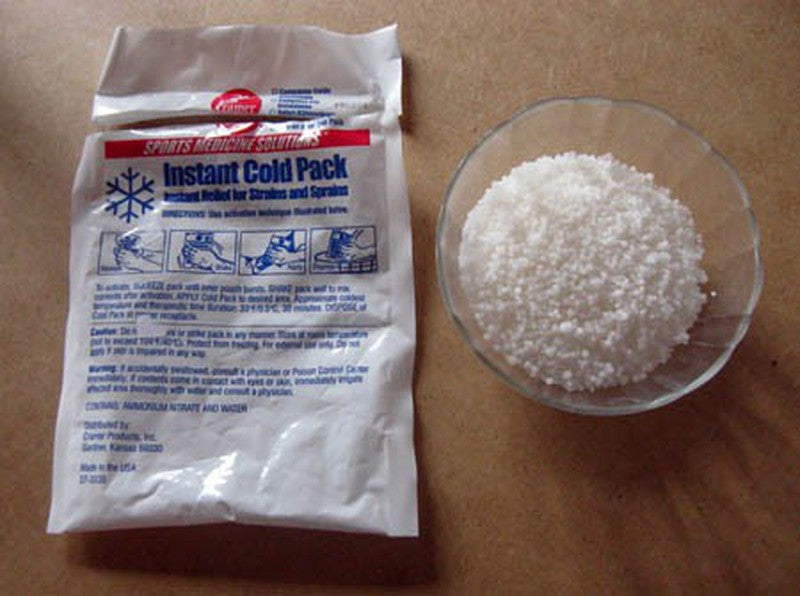
Understanding Instant Ice Packs: Reaction and Potential Risks During Injury Treatment
Share
Instant ice packs were/and are at times, still a popular choice for paramedics/on field applications and quick relief of pain. They offer an accessible means of applying cold therapy without the need for refrigeration. However, it's crucial to comprehend how these ice packs work and the potential dangers they can pose when used improperly. In this blog post, we will explore the underlying chemical reaction that powers instant ice packs and shed light on the precautions necessary for their safe usage.
-
How do instant ice packs work?
Instant ice packs rely on an endothermic reaction to generate cold temperatures swiftly. Most commonly, these packs consist of two separate compartments containing water and ammonium nitrate (NH4NO3) and a small pouch within them to divide the two components. When the divider is ruptured or squeezed, the water and ammonium nitrate mix together, triggering a chemical reaction.
The reaction can be represented as follows:
NH4NO3 + H2O → NH4+ + NO3- + H2O (endothermic reaction)
As the reaction occurs, it absorbs heat from the surrounding environment, causing a rapid drop in temperature. This temperature decrease enables the instant ice pack to reach a chilly, therapeutic level within seconds, making it an efficient solution for acute injury management.
-
Potential risks and dangers:
While instant ice packs offer a convenient method for initial injury treatment, they should be used with caution due to the following reasons:
a. Frostbite risk: Instant ice packs can rapidly lower the temperature at the application site. Without proper insulation or a barrier between the pack and the skin, prolonged exposure can result in frostbite. It is essential to use a towel or cloth to protect the skin and limit exposure to prevent tissue damage.
b. Chemical burns: Mishandling or rupturing the instant ice pack can lead to contact with the ammonium nitrate solution. Ammonium nitrate, in concentrated form, can cause skin irritation, burns, or even chemical burns. It is crucial to carefully follow the instructions provided with the ice pack and avoid direct contact with the solution.
c. Allergic reactions: Some individuals may be hypersensitive or allergic to the materials used in instant ice packs. Before using an ice pack, it is recommended to check the ingredients list and consult with a healthcare professional if there are concerns about allergies.
Conclusion: Instant ice packs provide a quick and accessible means of applying cold therapy to injuries. By understanding the underlying chemical reaction that powers these packs, users can better appreciate their effectiveness and take precautions for safe usage. It is vital to be aware of the potential risks associated with instant ice packs, including frostbite, chemical burns, and allergic reactions. Following the recommended guidelines, such as using a barrier between the pack and the skin, can help mitigate these risks and ensure that instant ice packs are used safely and effectively for injury treatment.